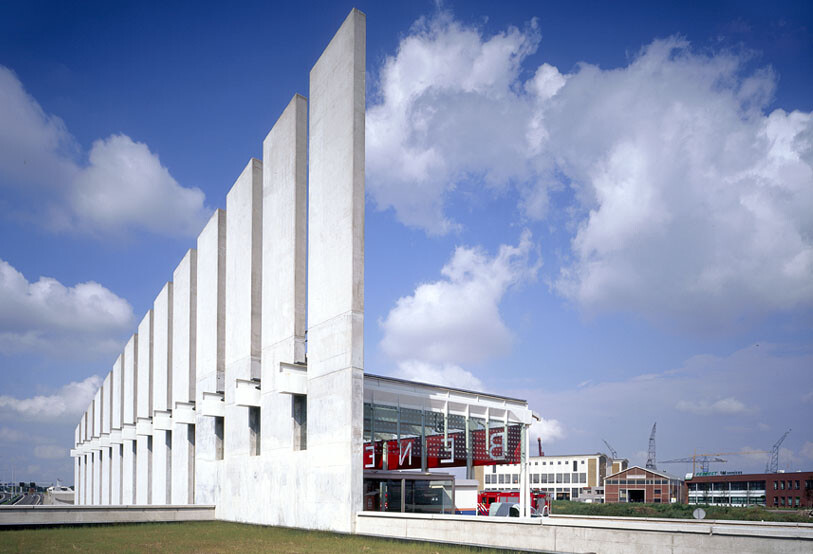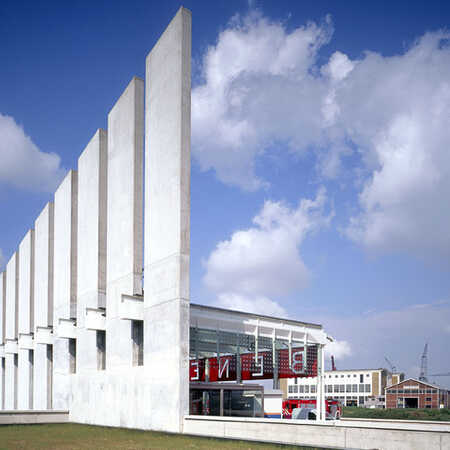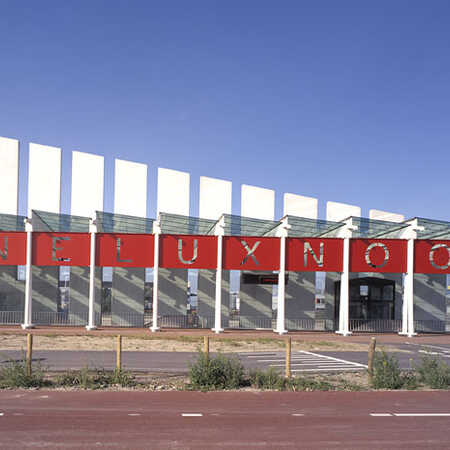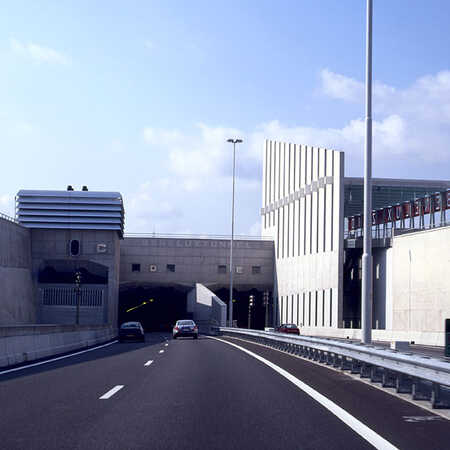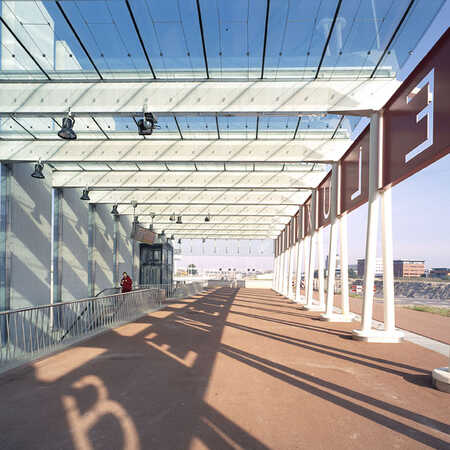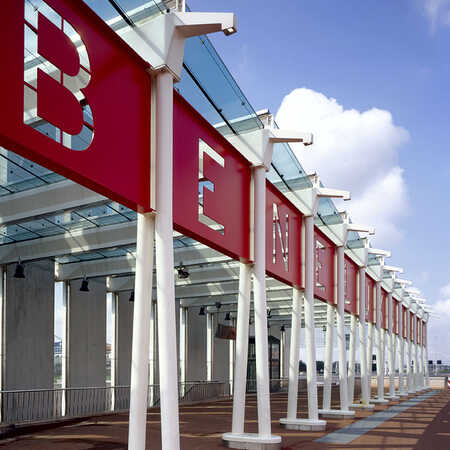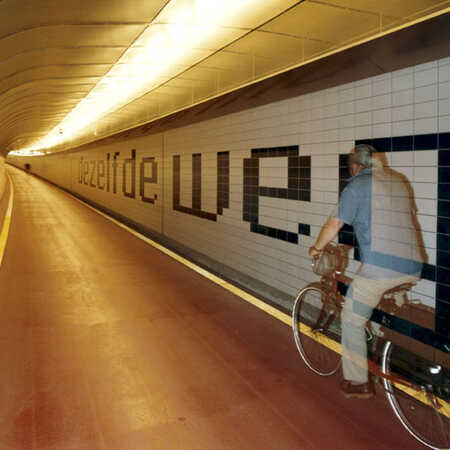0080
The expansion of the original Benelux Tunnel involves more than doubling its capacity. As well as the widening of the motorway it also entails the construction of a metro tunnel and a tunnel for cyclists and pedestrians. The design involved the architectural elaboration of the tunnel tubes and designing all the architectural components, such as the entrance buildings for cyclists and pedestrians on both sides of the Maas.
The entry points for cyclists and pedestrians had to fit within the limited width of the cycle tunnel below. The limited space prompted the design of an elongated building with two obliquely set escalators and a narrow, deep lift for both cyclists and pedestrians. In consultation with the client, the entrance has been kept as open as possible to prevent the space becoming a hangout.
The main volume of the entrance building is composed of an angled concrete wall with long light slits. Steel girders have been mounted at right angles from the grooves in the concrete wall. These steel girders support a canopy made solely of glass. The dimensions of the glass canopy mean that the actual entrance will not be affected by rain or snow, despite its three open sides. In order to ensure sufficient comfort the glass panels have a span of four metres – glass panels of this size have never been used horizontally.
The entrance buildings follow the curve of the tunnel, while the structure follows the bend in the roadway. The function of the tall slabs is primarily symbolic, as they are intended to prevent the relatively small entrance building being swallowed up in the enormous scale of the surrounding port area. Cyclists and pedestrians must be able to use it for orientation from a distance.
The cycle tunnel, more than 800 metres in length, is finished to a high standard in order to render the atmosphere in the cycle tunnel as pleasant as possible. The poem Voor Ari (‘For Ari’) by the Rotterdam-based poet Jules Deelder is printed on the tiles on the walls over the whole length of the tunnel, and this means that cyclists and pedestrians can track their position in the long tunnel. The tunnel’s arched ceiling is illuminated with ‘up-lights’. On one side, above eye level, there is a mirror of polished stainless steel attached to the wall, which makes the tunnel seem twice as wide.
Awards
Winner: Dutch Concrete Award 2003, ECSN Award 2004 (European Concrete Award)
Related
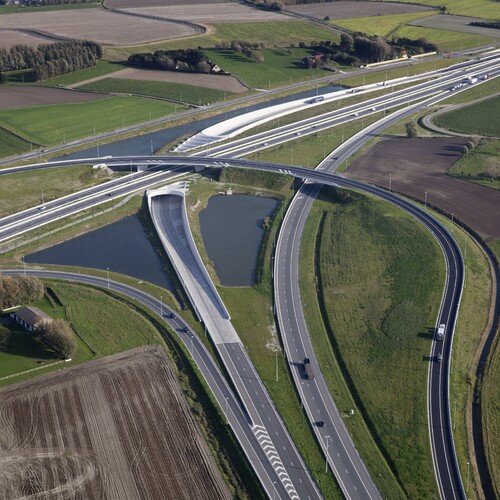

Road expansion A27/A1
Routing design
Not many people know such a thing even exists, but the motorway A27 (from Breda to Almere) has a routing design described by the Dutch Road…
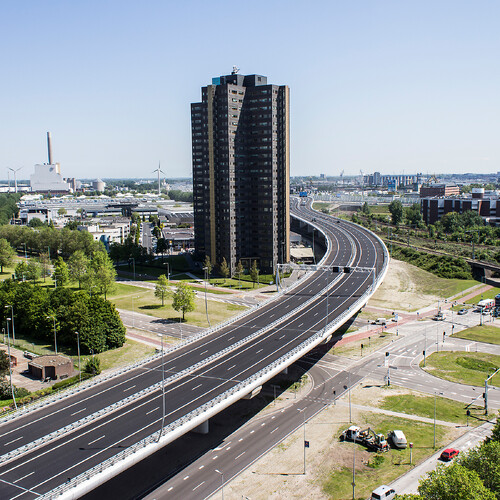
Westrandweg near Amsterdam
Besides being a civil engineering - and landscaping task, the design of road infrastructure has also become an architectural design task.
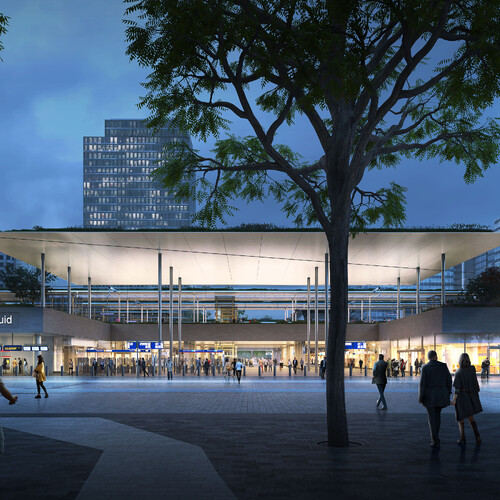
Zuidasdok, Amsterdam
Where the city is bursting at the seams
As befits any major urban expansion, plans for the area around the Zuidas in Amsterdam are ambitious in the extreme. The aim is to…
